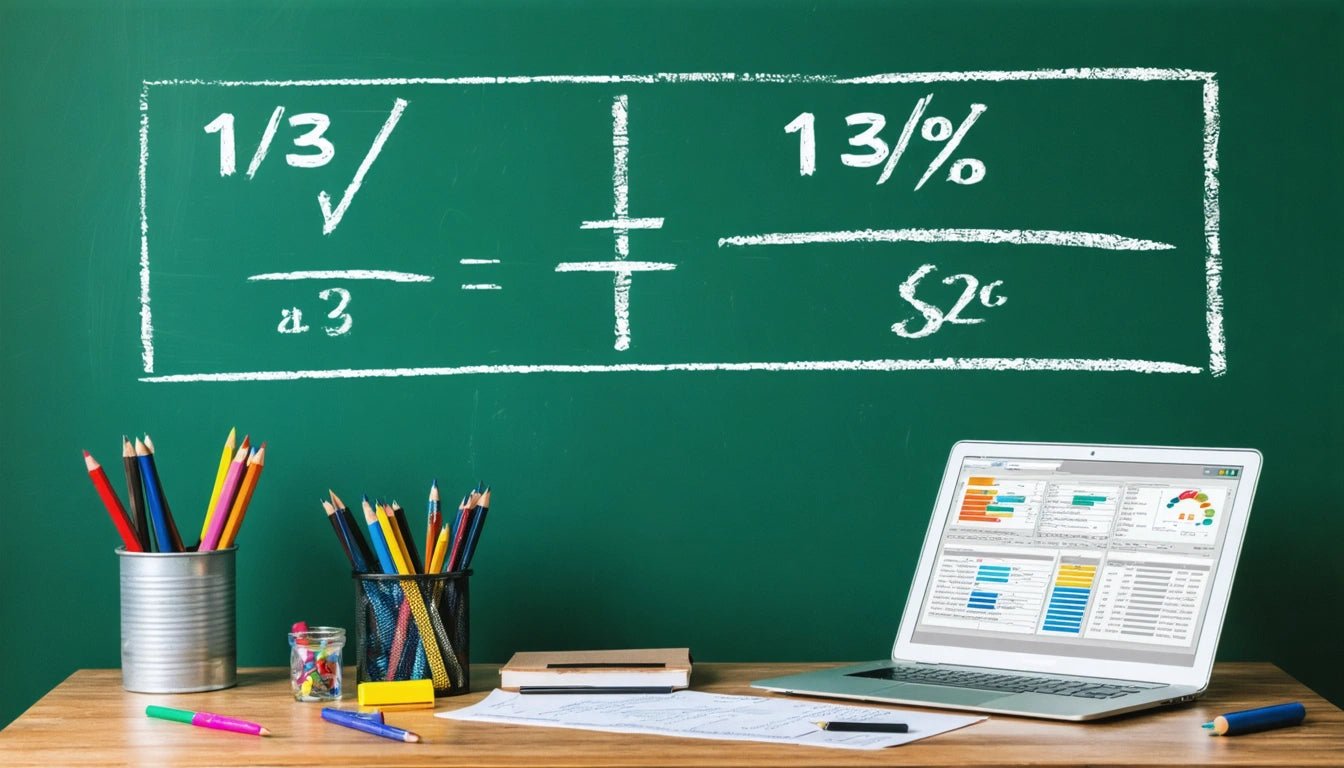Table of Contents
Converting Fractions to Percentages: Understanding 1/3 as a Percent
Fractions and percentages are two ways to express parts of a whole, with percentages often being easier to visualize in many contexts. Understanding what is 1/3 as a percent is essential for various calculations in daily life, from cooking measurements to financial calculations. This guide explains the conversion process and practical applications of this fundamental mathematical concept.
Understanding Fractions and Percentages
Fractions represent parts of a whole, with the numerator showing how many parts we have and the denominator indicating the total number of equal parts. Percentages, on the other hand, express parts per hundred, making them useful for comparisons and calculations.
The relationship between fractions and percentages is straightforward: percentages are fractions with 100 as the denominator. To convert a fraction to a percentage, we multiply it by 100 and add the percent symbol (%).
Converting One-Third to Percentage
To determine what is 1/3 as a percent, we need to follow these steps:
- Express 1/3 as a decimal by dividing 1 by 3: 1 ÷ 3 = 0.333...
- Multiply the decimal by 100: 0.333... × 100 = 33.333...
- Add the percent symbol: 33.333...%
Therefore, 1/3 as a percentage equals 33.333...%, which is typically rounded to 33.33% for practical purposes.
This repeating decimal can also be written as 33â…“%, which is the exact value of one-third as a percentage.
Practical Applications of One-Third Percentage
Understanding what 1/3 is as a percent has numerous practical applications:
- Cooking: Many recipes call for â…“ cup or â…“ tablespoon of ingredients
- Discounts: Calculating a one-third reduction in price (33.33% off)
- Time management: Dividing a project or day into three equal parts
- Resource allocation: Distributing resources in a 1:2 ratio (â…“ to one party, â…” to another)
When working with cannabis measurements, understanding these fractions is particularly important. For example, when using quality rolling trays for preparing herbs, precise measurements often involve thirds or quarters of available material.
Converting Other Common Fractions
Understanding how to convert 1/3 to a percentage provides the foundation for converting other common fractions:
| Fraction | Decimal | Percentage |
|---|---|---|
| 1/2 | 0.5 | 50% |
| 1/3 | 0.333... | 33.33% |
| 1/4 | 0.25 | 25% |
| 1/5 | 0.2 | 20% |
| 2/3 | 0.666... | 66.67% |
| 3/4 | 0.75 | 75% |
These conversions are particularly useful when understanding the cost of a quarter of weed or other common cannabis measurements.
Measurement Applications in Daily Life
The concept of one-third as a percentage applies to various measurement scenarios:
Volume Measurements
In liquid measurements, one-third of common volumes are frequently used. For example, when converting fluid ounces to milliliters, knowing that one-third of a fluid ounce is approximately 9.8 ml can be helpful.
Material Thickness
When understanding material thickness for packaging, one-third reductions or increases in thickness can significantly impact durability while optimizing material usage.
Financial Calculations
In business contexts, one-third often represents significant portions of budgets, market share, or resource allocation. Understanding that 33.33% represents exactly one-third helps in precise financial planning.
Mastering Fraction to Percentage Conversions
Converting fractions to percentages is a fundamental skill that enhances numerical literacy and practical problem-solving abilities. What is 1/3 as a percent? It's 33.33%, a value that appears repeatedly across various domains from cooking to finance.
For those working with measurements regularly, developing an intuitive understanding of these conversions saves time and reduces errors. Whether you're measuring ingredients, calculating discounts, or converting ounce measurements, knowing that one-third equals 33.33% provides a quick reference point.
By mastering these basic mathematical relationships, you'll approach measurement problems with greater confidence and accuracy, ensuring precision in both personal and professional contexts.



















